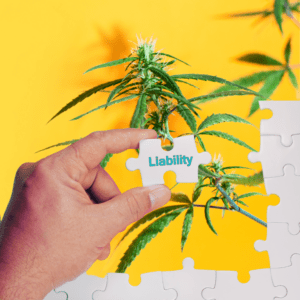Shielding Success: Understanding Product Liability in Cannabis

In the rapidly growing cannabis industry, product liability is a significant concern for businesses across the supply chain. As consumer demand for cannabis products continues to rise, so does the potential for liability claims related to product safety, quality, and labeling. Understanding the nuances of product liability is crucial for cannabis businesses to protect their reputation, finances, and long-term success. In this article, we delve into the complexities of product liability in the cannabis industry and explore strategies for mitigating risks and shielding success.
What is Product Liability?
Product liability refers to the legal responsibility of a manufacturer, distributor, or seller for injuries or damages caused by a defective product. In the context of the cannabis industry, product liability encompasses a range of issues, including:
Contamination: Contaminants such as pesticides, heavy metals, or microbial pathogens present in cannabis products can pose health risks to consumers.
Mislabeling: Incorrect or misleading labeling of cannabis products regarding potency, ingredients, or health claims can misinform consumers and lead to liability claims.
Adverse Effects: Allegations of adverse effects or health complications resulting from the use of cannabis products may give rise to product liability claims.
Common Product Liability Claims
Several types of product liability claims are prevalent in the cannabis industry:
Strict Liability: Under strict liability, cannabis businesses may be held liable for damages caused by their products, regardless of fault. This means that even if a company exercises reasonable care in producing and distributing its products, it can still be held accountable for defects that cause harm to consumers.
Negligence: Claims of negligence arise when a cannabis business fails to exercise reasonable care in ensuring the safety and quality of its products. This may include inadequate quality control measures, failure to test for contaminants, or improper labeling practices.
Breach of Warranty: Breach of warranty occurs when a cannabis product does not meet the express or implied warranties made by the manufacturer or seller. This could involve claims related to product quality, potency, or effectiveness.
Mitigating Product Liability Risks
To mitigate product liability risks and shield their success, cannabis businesses can implement the following strategies:
Quality Assurance and Testing: Implement rigorous quality assurance protocols and testing procedures to ensure that cannabis products meet safety and quality standards. Regular testing for contaminants, potency, and consistency is essential for minimizing risks.
Comprehensive Labeling Practices: Ensure accurate and compliant labeling of cannabis products, including clear information on ingredients, potency, dosage, and potential risks. Avoid making misleading claims or representations that could mislead consumers.
Product Liability Insurance: Obtain adequate product liability insurance coverage to protect against potential liability claims. Work with insurance providers specializing in the cannabis industry to tailor coverage to specific risks and exposures.
Navigating product liability risks is a critical aspect of risk management for cannabis businesses seeking to maintain their success and reputation in a competitive market. By understanding the complexities of product liability and implementing robust quality control measures, labeling practices, and insurance coverage, cannabis companies can shield themselves from potential liabilities and safeguard their long-term viability. Prioritizing product safety, transparency, and compliance not only protects consumers but also ensures the continued growth and success of the cannabis industry.











